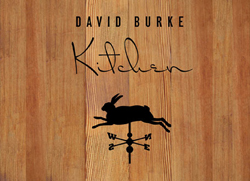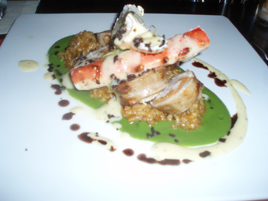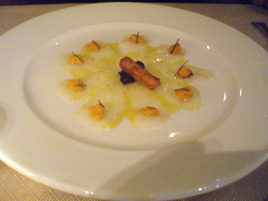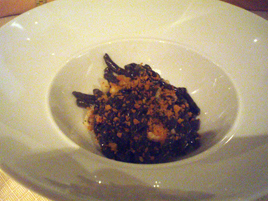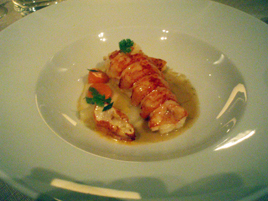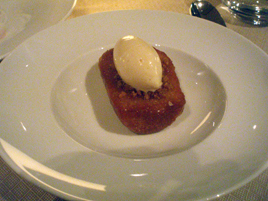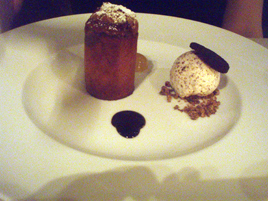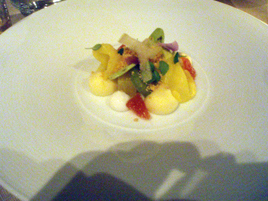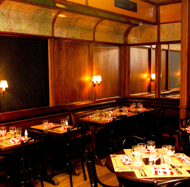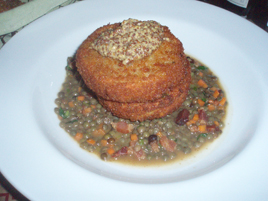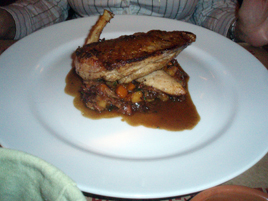First Look: Teqa
 Monday, February 28, 2011 at 04:51PM
Monday, February 28, 2011 at 04:51PM  Teqa is a new tacos-and-tequila place on the western edge of Kips Bay. Someone with talent is doing their P.R., as the restaurant managed the rare feat of getting the chef’s photo into Florence Fabricant’s weekly New York Times column, Off the Menu.
Teqa is a new tacos-and-tequila place on the western edge of Kips Bay. Someone with talent is doing their P.R., as the restaurant managed the rare feat of getting the chef’s photo into Florence Fabricant’s weekly New York Times column, Off the Menu.
That chef is Lisa Schoen, who has worked as a Food Network stylist and as the private chef for Saturday Night Live, the Rosie O’Donnell Show, and for New York Yankees star Derek Jeter. She also appeared on the Food Network competition show Chopped. This is her first restaurant, as far as I can tell.
 The owner is Derek Axelrod, who has worked as head of product placement for his family’s company, French Connection apparel. The website says that he “built a number of restaurants,” without naming them. The site is not shy about getting to the point: if Teqa succeeds, it will be “expanded to other locations,” that is, cloned.
The owner is Derek Axelrod, who has worked as head of product placement for his family’s company, French Connection apparel. The website says that he “built a number of restaurants,” without naming them. The site is not shy about getting to the point: if Teqa succeeds, it will be “expanded to other locations,” that is, cloned.
The dining room is attractive, with dark wood tables, dim lighting, and a spacious bar with 100 tequilas on display. (The illustration, above left, is a concept rendering from the website; the actual space looks a bit different.) Mercifully, the sound track is quiet enough to allow a conversation without having to yell.
I don’t usually visit restaurants on the first night of service, as I’d rather give them time to work out the kinks. But I had a craving for this type of food, and I figured that tacos and guacamole were fairly low-risk bets. There were minor service glitches that I won’t even bother to mention. Teqa was running well, for an opening night.
 An initial reaction is that such a nice space could offer more than just appetizers, tacos, salads, and sandwiches. Not that there’s anything wrong with the food I sampled, which was very good for the price, but I think a broader menu would work well here.
An initial reaction is that such a nice space could offer more than just appetizers, tacos, salads, and sandwiches. Not that there’s anything wrong with the food I sampled, which was very good for the price, but I think a broader menu would work well here.
Another reaction is that the kitchen can afford to amp up the heat. Two kinds of “Guac & Chips” ($11) are offered: “Mellow or MEGA-WATT.” I ordered the latter, which I found pleasantly spicy. But those who expect a three-alarm fire from the words “mega-watt” might be a bit disappointed.
I had the same issue with a Spicy Cucumber Margarita ($11), which didn’t live up to its billing. When I pointed this out, the bartender made an extra-spicy version of their oddly named “Tommy’s Margarita” ($9), which was much more like it. I am not really sure what accounts for the $2 price difference between the two.
A side order of fries (sent out as a comp; normally $8) was an unexpected delight. They had all the heat that was missing from the other dishes. A visit for the fries alone would be well worth it.


There are eight kinds of tacos, served on house-made soft tortillas (except for the so-called “Old School,” which comes in a hard shell). They cost $13 for three, but you can’t mix and match. I had the Guiness Braised Short Rib tacos, with roasted corn, frizzled leeks, Cojita cheese, and an unspecified “Teqa sauce.” It’s an excellent creation, but in keeping with the evening’s theme, a shade under-seasoned.
I’ll emphasize again that it was the first night of service, and seasoning could very well be adjusted in the coming weeks as the kitchen gets into its routine.
As of today, the front page of the website is a blog entry showing photos of all the celebrities that attended the restaurant’s opening party. That’s the wrong strategy. Diners who chase celebrities have the attention span of a flea: it won’t be long before they move to the Next Big Thing. Long-term success depends on attracting customers who care about the food, not those who care about the Big Names who supposedly have dined there.
On this showing, the food at Teqa is worth showcasing. For someone who hasn’t run a restaurant before, Chef Schoen seems to have her act together. If you’re in the Murray Hill or Kips Bay area, it’s well worth dropping in.
Teqa (447 Third Avenue between 30th & 31st Streets, Kips Bay)
 Teqa in
Teqa in  Cuisines: Mexican,
Cuisines: Mexican,  Manhattan: Kips Bay,
Manhattan: Kips Bay,  Restaurant Reviews
Restaurant Reviews 

